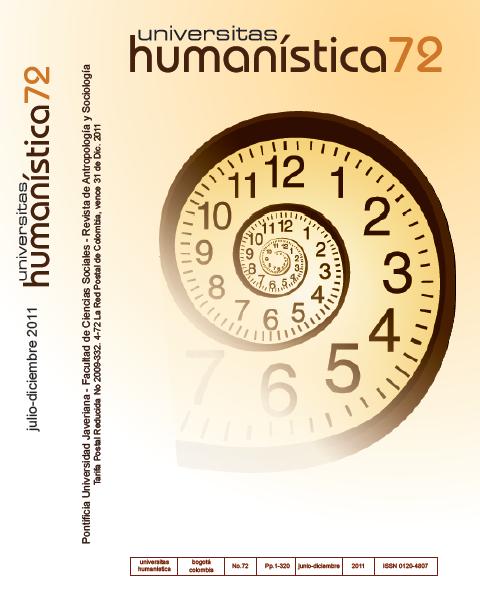Resumen
En Colombia existen bases de datos cuantitativas sobre el conflicto armado, varias de ellas públicas y de acceso libre. Este artículo reseña los rasgos teóricos y metodológicos centrales de algunas de estas bases y sus principales características a la hora de definir y medir la violencia política. A partir de los resultados de una investigación realizada en una región colombiana, se expondrán varios de los elementos metodológicos utilizados para procesar ―de forma estadística, espacial y cartográfica― la información que esas bases ofrecen. Tras esta exposición se da cuenta de algunos procedimientos que permitieron dimensionar las diferencias entre las bases. Estos contenidos se trabajan con el objeto de mostrar las consecuencias que para el análisis cuantitativo del conflicto armado implica el uso de una u otra base, toda vez que los resultados de estos análisis dependerán del tipo de fuente utilizada. 
La revista Universitas Humanística se encuentra registrada bajo la licencia Creative Commons Reconocimiento 4.0 Internacional. Por lo tanto, esta obra se puede reproducir, distribuir y comunicar públicamente en formato digital, siempre que se reconozca el nombre de los autores y a la Pontificia Universidad Javeriana. Se permite citar, adaptar, transformar, autoarchivar, republicar y crear a partir del material, para cualquier finalidad (incluso comercial), siempre que se reconozca adecuadamente la autoría, se proporcione un enlace a la obra original y se indique si se han realizado cambios. La Pontificia Universidad Javeriana no retiene los derechos sobre las obras publicadas y los contenidos son responsabilidad exclusiva de los autores, quienes conservan sus derechos morales, intelectuales, de privacidad y publicidad.
El aval sobre la intervención de la obra (revisión, corrección de estilo, traducción, diagramación) y su posterior divulgación se otorga mediante una licencia de uso y no a través de una cesión de derechos, lo que representa que la revista y la Pontificia Universidad Javeriana se eximen de cualquier responsabilidad que se pueda derivar de una mala práctica ética por parte de los autores. En consecuencia de la protección brindada por la licencia de uso, la revista no se encuentra en la obligación de publicar retractaciones o modificar la información ya publicada, a no ser que la errata surja del proceso de gestión editorial. La publicación de contenidos en esta revista no representa regalías para los contribuyentes.


